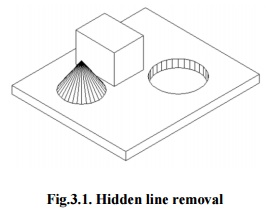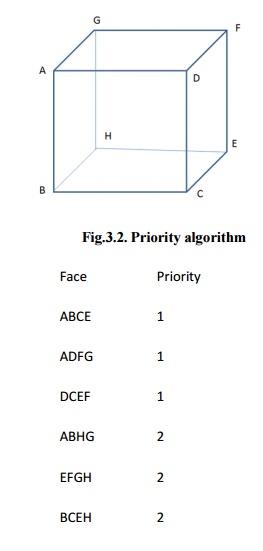Chapter: Mechanical : Computer Aided Design : Visual Realism
Hidden line removal
Hidden line removal
Hidden line removal (HLR) is the method of computing which edges are not hidden by the faces of parts for a specified view and the display of parts in the projection of a model into a 2D plane. Hidden line removal is utilized by a CAD to display the visual lines. It is considered that information openly exists to define a 2D wireframe model as well as the 3D topological information. Typically, the best algorithm is required for viewing this information from an available part representation.

Fig.3.1. Hidden line removal
3D parts are simply manufactured and frequently happen in a CAD design of such a part. In addition, the degrees of freedom are adequate to show the majority of models and are not overwhelming in the number of constraints to be forced. Also, almost all the surface-surface intersections and shadow computations can be calculated analytically which results in significant savings in the number of computations over numerical methods.
Priority algorithm is basis on organization all the polygons in the view according to the biggest Z-coordinate value of each. If a face intersects more than one face, other visibility tests besides the Z-depth required to solve any issue. This step comprises purposes of wrapper.
Imagines that objects are modeled with lines and lines are generated where surfaces join. If only the visible surfaces are created then the invisible lines are automatically removed.

Fig.3.2. Priority algorithm
Face Priority
ABCE 1
ADFG 1
DCEF 1
ABHG 2
EFGH 2
BCEH 2
ABCD, ADFG, DCEF are given higher priority-1. Hence, all lines in this faces are visible, that is, AB, BC, CD, DA, AD, DF, FG, AG, DC, CE, EF and DF are visible.
AGHB, EFGH, BCEH are given lower priority-2. Hence, all lines in this faces other than priority-1 are invisible, that is BH, EH and GH. These lines must be eliminated.
Related Topics